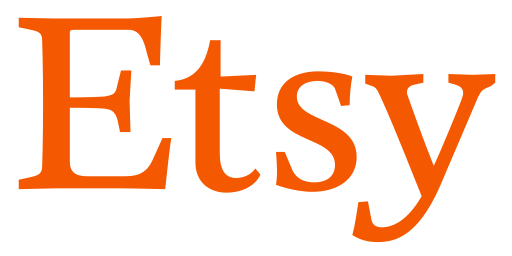
A bosal is a type of noseband used in horse training and riding, typically crafted from braided rawhide or leather. It functions as part of a hackamore, a bitless bridle designed to guide and control a horse without the use of a traditional bit. The bosal applies pressure to the horse's nose and jaw, communicating cues through the use of a mecate, a long rein traditionally made from horsehair or rope. This pressure encourages the horse to move away from the pressure, facilitating communication between horse and rider.
When the bosal is combined with a mecate and a hanger (also called a headstall), it forms a complete hackamore, often referred to as a Spanish hackamore. The hackamore, particularly the bosal, is an essential element of the vaquero or California style of horse training, emphasizing subtle communication and finesse.
Check Out Our Horse Bosal Collection

Using a bosal correctly involves understanding its parts, how they work together, and how to fit them on the horse. A properly set-up bosal ensures effective communication and comfort for the horse.
The Four Key Parts of a Bosal Setup
To use a bosal correctly, you’ll need:
1. Bosal (Rawhide Nosepiece)
The bosal itself is made of braided rawhide or leather and forms the core of the hackamore. It fits around the horse’s muzzle, applying pressure to guide and control the horse without a bit.
2. Mecate Reins (or McCarty for Anglos)
The mecate is a long rein, typically 22–24 feet long, made from braided horsehair. It’s wrapped around the heel knot (also called the heel butt) of the bosal. When tied correctly, the mecate forms:
-
A rein loop that you hold while riding.
-
A lead rope on the other end, used to lead or tie the horse.
3. Hanger (or Headstall)
The hanger is a headstall that attaches to the bosal and goes over the horse’s poll (the area behind the ears). It keeps the bosal in place on the horse’s face, ensuring it doesn’t slip or move during riding.
4. Fiador (Optional)
A fiador is a thin rope or cord used by vaqueros or buckaroos, especially during daily work with cattle or fences. It ties around the horse’s poll and under the jaw, creating a stabilizing loop that prevents the bosal from slipping under the chin when dismounting for groundwork.
-
When used: Common in working ranch settings where riders frequently get on and off.
-
When not used: Trainers often omit the fiador because they prefer the bosal to rest directly on the horse’s chin, allowing for a clearer release of pressure.

1. Attach the Bosal to the Hanger:
-
Slide the hanger through the top of the bosal. Adjust it so that the bosal sits evenly and comfortably on the horse’s nose, just above the cartilage but below the cheekbones.
2. Tie the Mecate to the Bosal:
-
Wrap the mecate around the heel knot of the bosal. Make sure the wraps are tight and even to maintain balance.
-
Form a rein loop for riding and leave the extra length as a lead rope.
3. (Optional) Add a Fiador:
-
Tie the fiador around the hanger and under the horse’s jaw if you plan to work the horse from the ground after dismounting. This stabilizes the bosal and prevents it from slipping.
4. Fit and Adjust:
-
Ensure the bosal sits comfortably on the horse’s nose, about 1–1.5 inches above the nostrils.
-
The hanger should be adjusted so the bosal doesn’t hang too low or sit too tight.
-
The mecate should provide clear, consistent contact with enough slack to avoid tension when the horse is at rest.
5. Use the Bosal Correctly:
-
Apply gentle pressure through the reins to cue the horse. Release pressure immediately when the horse responds, reinforcing desired behavior.
-
Avoid jerking or pulling on the mecate, as this can cause discomfort or confusion.
A bosal is an essential part of a hackamore, which is a type of bitless bridle used to control and train horses. Its purpose is to provide gentle, clear communication between the rider and the horse, using pressure and release on the horse’s nose and jaw.
Here’s how a bosal works and what it does:
1. Provides Direction and Control
-
The bosal applies pressure to the horse’s nose, jaw, and chin when the reins (mecate) are used.
-
This pressure encourages the horse to move away from it, allowing the rider to signal direction (turning left or right) and control speed (slowing down or stopping).
2. Encourages Lightness and Responsiveness
-
The bosal operates on pressure and release: pressure is applied when the rider cues, and release comes as soon as the horse responds.
-
Over time, the horse learns to respond to lighter and lighter cues, promoting responsiveness and finesse.
3. Bitless Communication
-
Unlike a metal bit, the bosal communicates through pressure on the soft tissues of the nose and jaw.
-
This is particularly useful for young horses, horses with mouth issues, or riders who prefer a gentler approach to training.
4. Encourages Proper Head Carriage
-
The bosal helps teach the horse to carry its head properly, develop collection, and balance its movements.
5. Allows for Groundwork and Riding
-
With the mecate reins tied to the bosal, it’s easy to transition from riding to groundwork (e.g., lunging, leading) without changing equipment.










